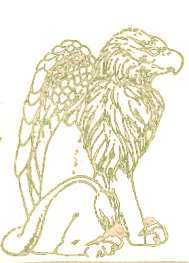Search for ferns by common name, latin name, USDA Zone, or by keywords like whether the fern is Evergreen, Sub-Evergreen, Semi-Evergreen, Deciduous, or Wintergreen or just browse our current fern selections.
Giant Ostrich Fern (Matteucia struthiopteris 'Jumbo')
Giant Ostrich Fern (Matteucia struthiopteris 'Jumbo')
Synonyms/Also Sold As: Fiddlehead Fern, Ostrich Fern, Giant Ostrich Fern, King Ostrich Fern, Matteucia Struthiopteris 'Jumbo', Matteucia struthiopteris 'King'
Please note: Ostrich Ferns are deciduous and may be dormant or preparing to go dormant if shipped in the fall.
Unfurling fronds have a distinct plume-like quality and tend to be somewhat undulated, giving maturing fronds an Ostich-feather like appearance. Although many ferns have edible croziers, the Ostrich Fern is one of the best since it has very tender new growth and relatively few papery scales. To harvest them, simply prune off emerging croziers near the caudex (base) before the foliage begins to break free. Run the fiddleheads under warm water and gently brush any papery scales off of the stems. Treat the fiddleheads like asparagus: they can be pickled, braised, broiled, baked or lightly sauteed. Avoid overcooking them, as they are best with a little crunch. It may be possible to harvest several rounds of fiddleheads from your ferns in the spring, but avoid over harvesting from a single fern; we typically like to leave at least one crozier from the first harvest for the fern to unfurl so it can gather energy to make more fronds. Fortunately these ferns colonize, so in good conditions they will spread readily. While this fern has been advertised by some growers as 'drought tolerant,' it is really not! It will survive but go completely dormant if the summer is too hot and dry, and prefers shady, moist to extremely wet boggy conditions to be truly spectacular.
When Dr. John Mickel first visited my garden in 1980 and saw my colony of Matteuccia he was impressed with its size and the number of fertile bundles. Divisons were sent his way and in time this population became one of his offical favorites and was produced by a liner company, "Just for Starters," in Connecticut and dubbed 'Jumbo'. When that nursery was sold to Casa Flora the stock was passed along and for a while they assigned the name 'King' to this form, a name which it continues to be sold under. I originally purchased this population of ostrich fern from a CA fern nursery in Fresno thirty years ago. Tom Wash, owner of Cailfornia Ferns, told me he had gotten his start from a local Japanese farmer. I always assumed that this was a typical Asian representative of ostrich fern. Recently John Micklt told me that Dr. Kato from Japan carefully examined it and says he has never seen anything like it in Japan, but its basal pinnae strongly resemble characteristics found in European specimens. Tom has long since disappeared form the fern scene so I cannot find out more particulars about the farmer that shared it with him. Despite the mystery surrounding its origins, it is safe to assume the original stock came from the Eurasian continent originally. This is a particularly robust form with a very hefty caudex not unlike a low tree fern in aspect. As far as I know no extensive chromosome analysis has been done on this fern, but I suspect it has a doubled chromosome, as it produces almost twice the number of fertile fronds and doesn't seem to form such intensely tight colonies as its American cousin, var. pensylvanica. Many thanks to Casa Flora for making it possible for this fern to become widely available.
Frond Condition: Deciduous; colonizing
Mature Height: 3-5'; colonizing
Origin: Asia
Cultural Requirements: Partly Shaded, Full Shade, Evenly Moist, WET
USDA Zones: 2, 3, 4, 5, 6, 7, 8, except in SE US (does not like heat with high humidity)
Notes: New croziers are edible! Gently brush scales off under warm water and saute, broil or pickle like asparagus spears.








